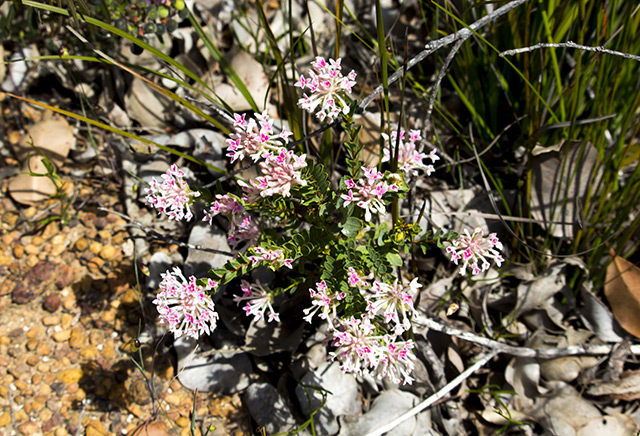Invasive weed from Africa found to be an excellent protective agent for the kidneys, according to new study
11/07/2018 / By Ellaine Castillo

Carbon tetrachloride (CCl4) is a commonly used chemical for dry-cleaning. Unfortunately, exposure to this substance can lead to damaged kidneys. A study, conducted by researchers from COMSATS Institute of Information Technology, Quaid-i-Azam University, and Ethiopian Public Health Institute, has shown that Sida cordata can be used to treat CCl4-induced kidney damage.
The kidneys are a pair of organs responsible for removing waste and excess water from the body. As previously mentioned, these organs are vulnerable to damage by CCl4 exposure. CCl4 induces damage through two of its metabolites, namely, trichloromethyl and trichloromethylperoxy radicals. The presence of these free radicals triggers lipid peroxidation, which can destroy cell membranes and cause tissue damage.
Antioxidants are often used to treat free radical-induced damage on the different organs. They work by sequestering free radicals and inhibiting lipid peroxidation. Although antioxidant enzymes are naturally produced by the body, excessive amounts of free radicals can lead to an increased demand for antioxidants, which the body might not be able to supply completely. This is why it is important to obtain antioxidants from either dietary supplements or plant-based foods.
Previous studies have shown the in vitro antioxidant potential ethyl acetate fractions of S. cordata, which is a plant commonly found in Pakistan, India, and other tropical countries. This plant has been used as traditional medicine for reducing fever, tightening skin, producing urine, increasing bowel movement, and reducing labor pains.
In this study, which was published in BMC Complementary and Alternative Medicine, the in vivo antioxidant activity and nephroprotective potential of S. cordata ethyl acetate fractions were determined. The researchers made use of male Sprague-Dawley rats with CCl4-induced kidney damage as the animal model for the different experiments. It was observed that CCl4 treatment altered urine and serum composition, as well as the activity of antioxidant enzymes. In addition to these, kidney structure was also destroyed. Upon treatment with ethyl acetate fractions of S. cordata, the aforementioned changes observed in CCl4-treated mice were reversed. S. cordata was observed to work in a dose-dependent manner, with a concentration of 300mg/kg having comparable effects to silymarin, a commonly used medicine for kidney and liver damage.
The phytochemical content of S. cordata ethyl acetate fractions was also evaluated using high-performance liquid chromatography with diode array detection (HPLC-DAD). From this, they determined the presence of gallic acid, catechin, and caffeic acid. These bioactive compounds have been associated with various beneficial properties, such as the anti-metastatic and anti-tumor effects of caffeic acid. Meanwhile, catechin exhibits neuroprotective, anti-apoptotic, and anti-inflammatory properties while gallic acid can inhibit lipid peroxidation.
Overall, these results show that the ethyl acetate fraction of S. cordata is a potential treatment for free radical-induced kidney damage. This nephroprotective property of S. cordata can be attributed to the presence of bioactive compounds that exhibit antioxidant activity. (Related: Antioxidant may prevent kidney damage, study finds (press release).)
How to protect your kidneys
Aside from taking nephroprotective substances, other ways of protecting the kidneys include:
- Regulating sugar levels – Patients with diabetes are at a higher risk of developing kidney diseases. Maintain blood sugar content at a healthy level by maintaining a healthy weight, exercising, and reducing sugar and fatty acid intake.
- Drinking enough water – Water intake helps the kidney filter out excess salts and toxins from the body. However, too much water can also be bad for kidney health. Drinking 2 liters of water a day is recommended for protecting the kidney.
- Quitting from smoking – Blood flow is impaired in people who smoke. This reduces the amount of blood that reaches the kidneys, consequently impairing their functions. In addition to this, smoking also increases the risk of kidney cancer.
Learn more about how Sida cordata can protect your kidney by visiting NaturalCures.news today.
Sources include:
Tagged Under: antioxidant, caffeic acid, Catechin, CCl4, Free radicals, Gallic acid, herbal medicine, kidney, kidney damage, kidney health, lipid peroxidation, nephroprotective, nephrotoxicity, Sida cordata
RECENT NEWS & ARTICLES
Herbs.News is a fact-based public education website published by Herbs News Features, LLC.
All content copyright © 2018 by Herbs News Features, LLC.
Contact Us with Tips or Corrections
All trademarks, registered trademarks and servicemarks mentioned on this site are the property of their respective owners.




















